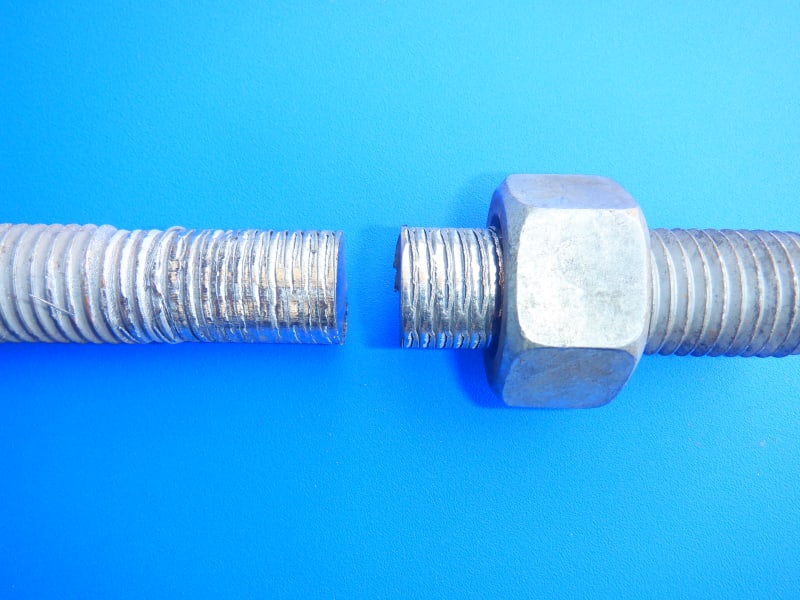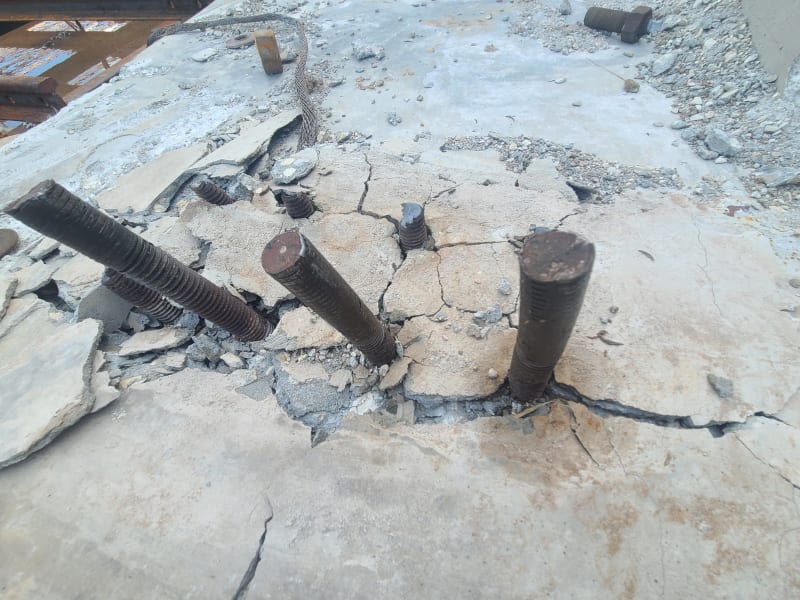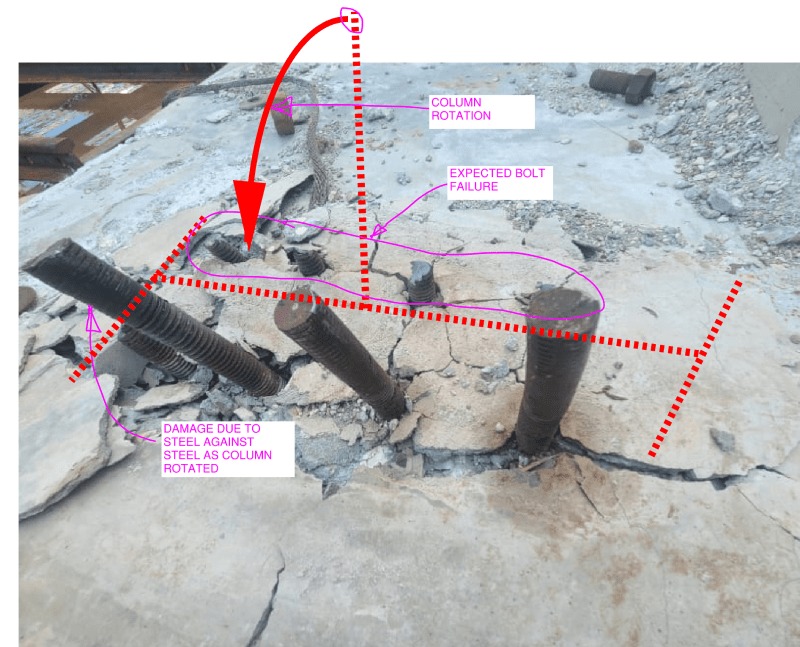-
1
- #1
Ingenuity
Structural
- May 17, 2001
- 2,374
I recently repaired a 60 ton center-hole hydraulic ram (for post-tensioning bar stressing), and to verify that the new seal kit was indeed holding I did a recent load test. I grabbed a 1" dia x 105 ksi F1554 galv anchor rod with heavy hex nuts and washers (I usually use a 150 ksi PT bar but not on this occasion).
Anyway, got to about 3000 psi of gauge pressure (about 36 kip of load) and the threads stripped, pressure dropped back to less than 2,000 psi then I increased it again, and every increment to about 3,000 psi I continued to strip the threads.

So got me thinking that what I thought was 105 ksi materials appears to be only 36 ksi (1" dia tensile capacity is min 35 kips). Opps - and why I usually use 150 ksi PT bar with non-UNC threads.
But I was surprised that the it did not fail at the root of the threads. I have always assumed that the mechanical threads were stronger than the tensile failure of the thread-included section.
The separation you see in the photo is a grinder cut (not section failure) because I had to remove the bar from the test fixture.
Load was applied essentially monotonically, except for the stepping increment after first thread failures.
I learnt something today, besides keeping better account of anchor rod grades.
Anyway, got to about 3000 psi of gauge pressure (about 36 kip of load) and the threads stripped, pressure dropped back to less than 2,000 psi then I increased it again, and every increment to about 3,000 psi I continued to strip the threads.

So got me thinking that what I thought was 105 ksi materials appears to be only 36 ksi (1" dia tensile capacity is min 35 kips). Opps - and why I usually use 150 ksi PT bar with non-UNC threads.
But I was surprised that the it did not fail at the root of the threads. I have always assumed that the mechanical threads were stronger than the tensile failure of the thread-included section.
The separation you see in the photo is a grinder cut (not section failure) because I had to remove the bar from the test fixture.
Load was applied essentially monotonically, except for the stepping increment after first thread failures.
I learnt something today, besides keeping better account of anchor rod grades.



![[ponder] [ponder] [ponder]](/data/assets/smilies/ponder.gif)
